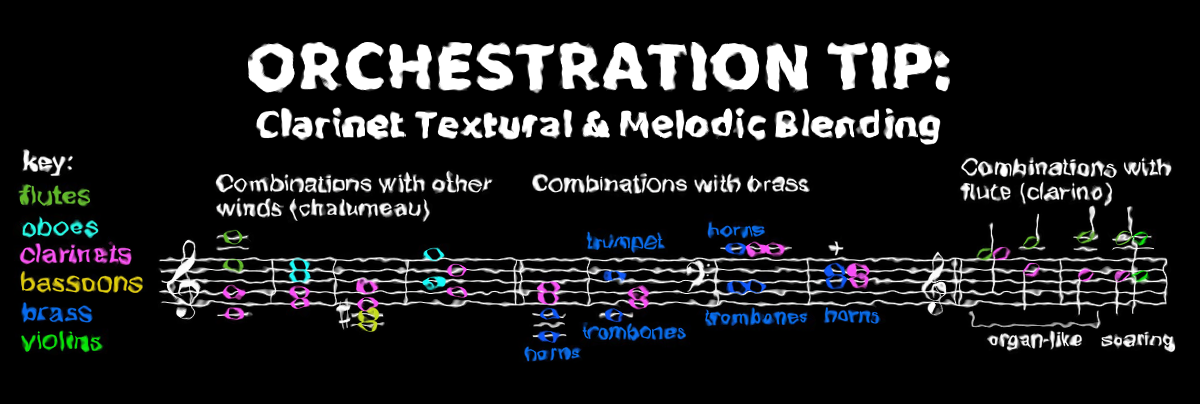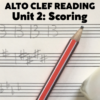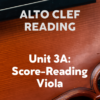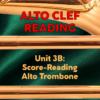The clarinet is an excellent resource for supporting and colouring harmonic and melodic texture.
(Tip no. 18 from 100 Orchestration Tips, 2nd Edition)
The unique resonance of the clarinet’s registers are sometimes misconstrued as too individual to blend harmonically or melodically with other instruments. But a little score-reading will immediately reveal the clarinet as the perfect mixer at a party, with the ability to combine constructively with nearly every other type of timbre.
Let’s start with the chalumeau register. The woodiness of its tone means that it can bond almost imperceptibly to the cellos or violas. Of course, it’s important to point out that for a perfect blend, the clarinet may need marking down by one dynamic degree. But generally speaking, clarinets double very well with strings, especially violas who may need strengthening in some passages. Be aware that clarinets tend to add a hollower sheen when blending, which might suck a little bit of characteristic warmth out of some passages, but work just perfectly in others. The overall effect is a string line or harmony that feels fuller without being too thick – which may be just what’s needed in lighter textures.
In harmonic combinations with other winds, the general rule is underlay higher-register flutes and oboes and overlay middle-to-lower register bassoons. Clarinets interlock (aka “cross- voicing”) quite well with middle-register oboes for a mysteriously blended sound, combining the reediness of both instruments. But these crossings must be scored with a great deal of care and intuition.

Clarinets give a lot of shine to a four-part harmony when overlaid on lower horns. They also play quite well when enclosed by octave brass, so long as the dynamic isn’t too loud. Doubled clarinets in unison with horns and octave unison with trombones is a powerful sound. One of RImsky-Korsakov’s favourite blendings was chalumeau register clarinets in thirds with low stopped horns, though keep in mind that horn stopping has a natural lower limit (as seen in Chapter 31. Horn Stopping Range and Mutes).
In the clarino register, the clarinet shows greater affinity for the flute in doublings, harmonies, and octaves. Because of the tendency of both instruments to shine a bit, their combined resonance will evoke organ-like tones, especially in octaves. When these octaves double violin melodies, the result is a soaring sound that has more of an edge to it than if oboe were the lower voice.
Orchestrators are often warned not to double oboes with clarinets – but in fact many great works are so scored, especially Tchaikovsky, in both harmony and melody. Of course, there’s also the well-known opening theme of Schubert’s Unfinished Symphony, a unison melody of clarinet and oboe that works precisely because one register compensates for the other as the music rises and falls. Clarinet unison with trumpet can also work okay, if the conductor takes the time to balance the effect.

Of course, clarinet works just as well when providing a background pattern under a melodic line, very much like the violas with which they blend so well. Examples of this are numerous throughout the literature.
In fact, the clarinet is such a flexible instrument in accompaniment and complement that its uses can express a highly individual style on the part of different composers. There’s a wealth of great strategies to score-read. Let’s close this tip with one of my favourites, the opening of Debussy’s La Mer, movement 2: Jeux de vagues. Here, the combination of clarinets, bassoons, and English horn creates a positively horn-like sound behind the shivering strings. The voicing of the woodwind harmony plays a role in this, an F#add2/C# chord. The whole page has wonderful depths of coloristic intrigue, but only lasts a brief moment when performed.










